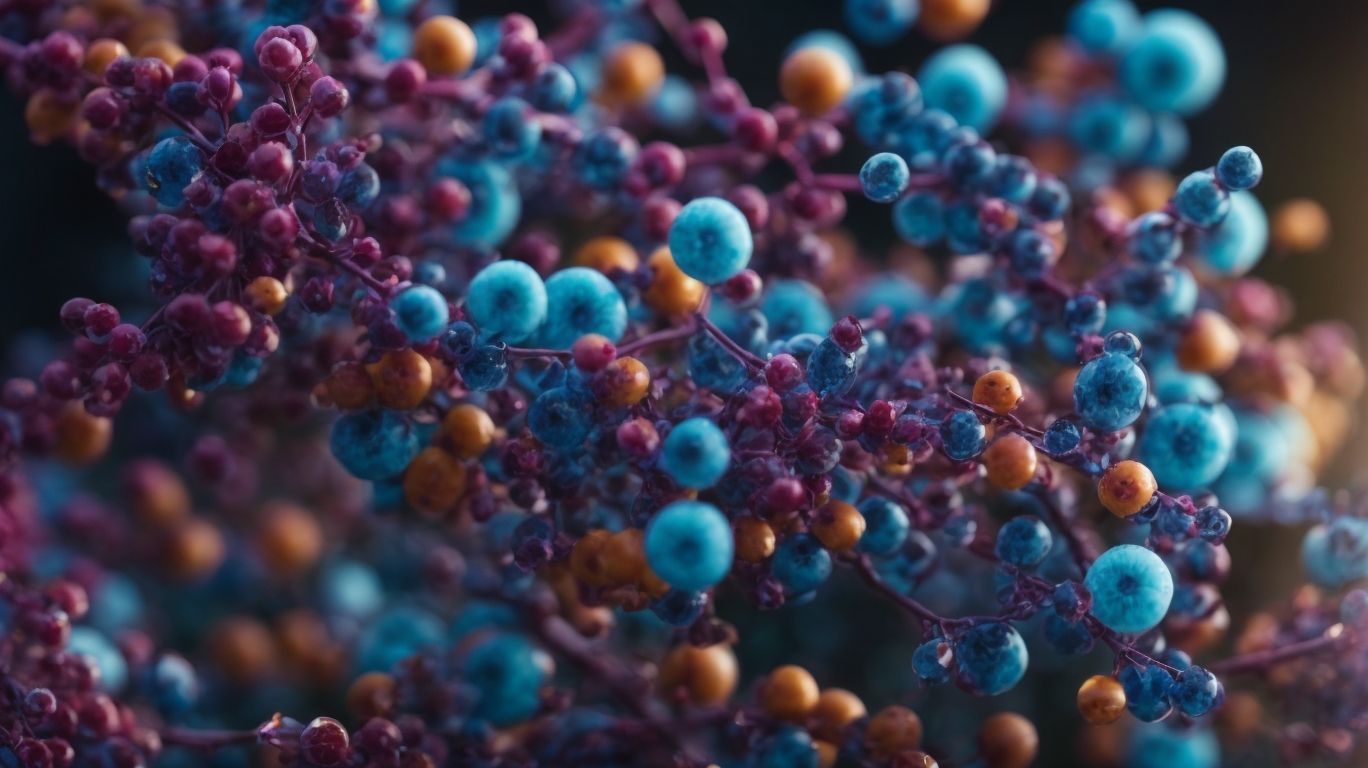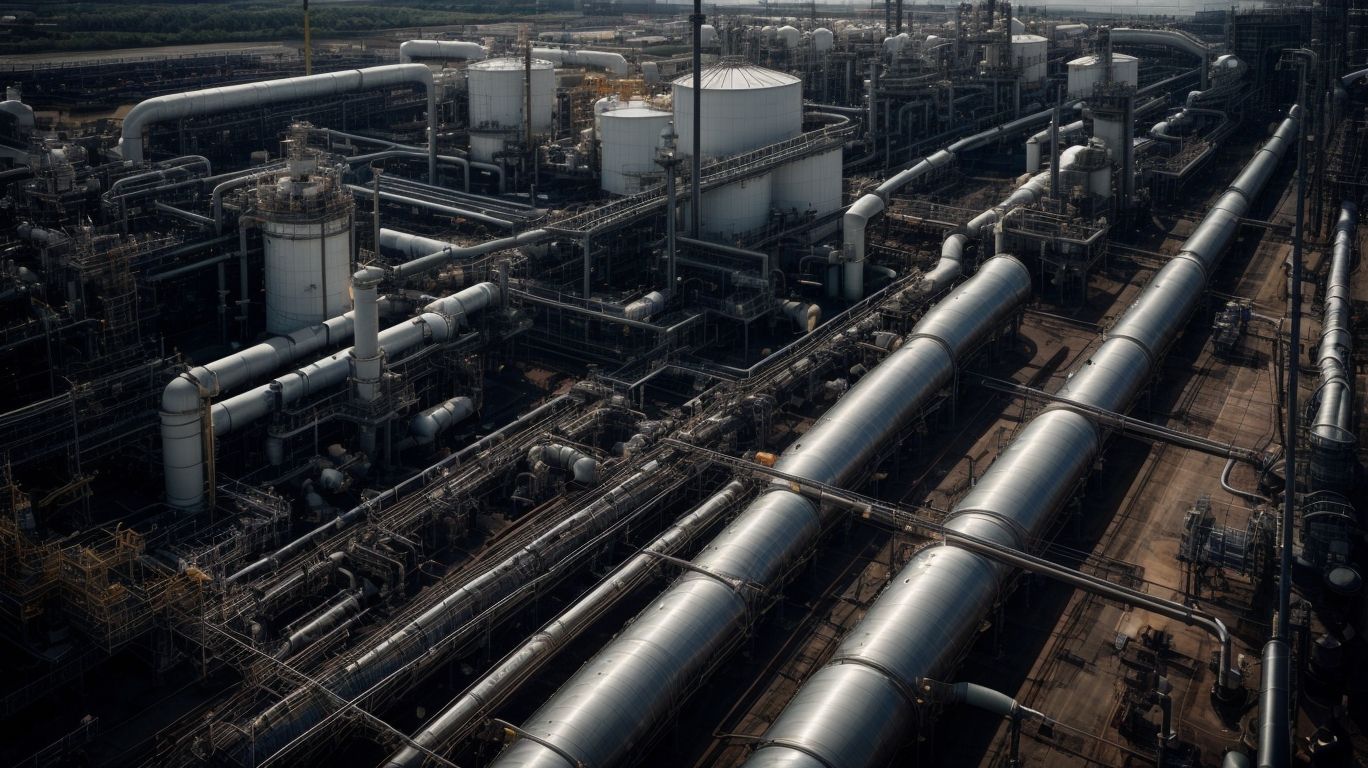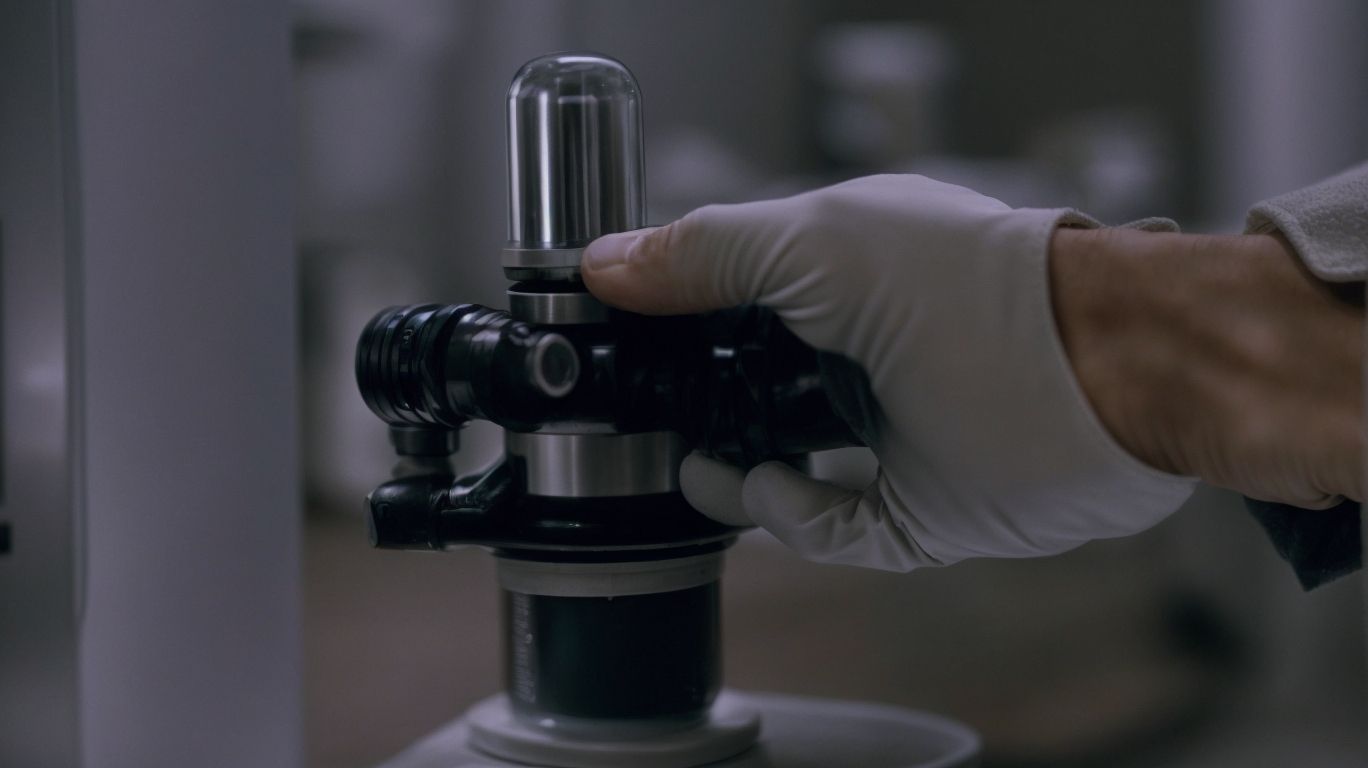Ethylene, also known as ethene, is a colorless and flammable gas that is widely used in the chemical industry. It is a vital building block for the production of various plastic and rubber products and is also used in the production of other chemicals. Understanding the chemical properties of ethylene is crucial for its safe handling and effective utilization in various industries.
Ethylene is an unsaturated hydrocarbon with the molecular formula C2H4 and a double bond between the two carbon atoms. This double bond makes ethylene highly reactive, giving it unique chemical properties. Some of the key chemical properties of ethylene include:
- Molecular Formula and Structure: The molecular formula of ethylene is C2H4, and it has a linear molecular structure.
- Physical Properties: Ethylene is a colorless gas with a faint, sweet odor. It is slightly soluble in water and has a density of 0.97 g/L at room temperature.
- Chemical Reactivity: Due to the presence of a double bond, ethylene readily undergoes addition reactions, making it a versatile building block for the production of various chemicals.
- Uses and Applications: Ethylene is used in the production of polyethylene, the most commonly used plastic in the world. It is also used in the production of ethylene oxide, ethylene glycol, and various other chemicals.
Ethylene is primarily produced through steam cracking, a process that involves heating hydrocarbons to high temperatures to break them down into smaller molecules. Other methods of ethylene production include fluid catalytic cracking and ethane dehydrogenation.
However, the production of ethylene has significant environmental impacts. The process can release harmful pollutants such as carbon monoxide, nitrogen oxides, and volatile organic compounds, leading to air pollution and water pollution. It also contributes to greenhouse gas emissions, making it a concern for climate change.
Furthermore, handling ethylene also requires certain safety considerations. It is highly flammable and can pose a risk if not handled properly. It is also toxic and can cause respiratory and skin irritation. Proper storage and transportation procedures must be followed to ensure the safe handling of ethylene.
In conclusion, understanding the chemical properties of ethylene is crucial for its efficient production, safe handling, and responsible use in various industries. It is essential to continuously monitor and regulate the production and usage of this versatile chemical to minimize its environmental impact and ensure the safety of those handling it.
Key Takeaways:
What Is Ethylene?

Photo Credits: Chemicalglossary.Net by Noah Clark
Ethylene, also known as ethene, is a colorless, flammable gas with a slightly sweet odor. It is a naturally occurring hydrocarbon and is the simplest member of the alkene group. Ethylene has a wide range of industrial uses, including in agriculture, manufacturing, and chemical production. It is commonly used to ripen fruits, promote flowering in plants, and as a raw material in the production of plastics, solvents, and detergents.
Understanding the properties of ethylene is crucial in ensuring safe handling and storage. It is important to note that ethylene is highly flammable and should be stored and handled with care. Additionally, exposure to high concentrations of ethylene can be harmful to human health. Therefore, it is essential to have a thorough understanding of its chemical properties for safe and effective use in various applications.
What Are the Chemical Properties of Ethylene?

Photo Credits: Chemicalglossary.Net by Larry Johnson
In the world of chemistry, understanding the properties of different substances is crucial for their safe and effective use. In this section, we will delve into the chemical properties of ethylene – a colorless and flammable gas commonly used in various industries. From its molecular formula and structure to its physical and chemical characteristics, we will provide a comprehensive guide to help you understand this important compound. Additionally, we will explore the diverse uses and applications of ethylene, showcasing its significance in our daily lives.
1. Molecular Formula and Structure
The molecular formula and structure of ethylene can be determined by following these steps:
- Identify that ethylene consists of two carbon atoms and four hydrogen atoms.
- Determine that there are two carbon atoms and four hydrogen atoms in ethylene.
- Note that ethylene is a hydrocarbon with a double bond between the carbon atoms.
- Understand that each carbon atom in ethylene is bonded to two hydrogen atoms.
By following these steps, you can gain a clear understanding of the molecular formula and structure of ethylene.
2. Physical Properties
Physical properties of ethylene play a crucial role in understanding its behavior and applications. Here are the key aspects to consider:
- Molecular formula and structure: Ethylene has a molecular formula of C2H4, consisting of two carbon atoms and four hydrogen atoms. It features a double bond between the carbon atoms, resulting in a linear structure.
- State: Ethylene is a colorless and flammable gas at room temperature and pressure.
- Boiling point: It has a boiling point of -103.7 degrees Celsius (-154.7 degrees Fahrenheit), making it easily liquefiable.
- Density: The gas has a density of 0.567 g/L, which is lighter than air.
- Solubility: Ethylene is slightly soluble in water, with a solubility of 1.95 g/L at 20 degrees Celsius.
- Reactivity: It is highly reactive, easily undergoing addition reactions with other compounds.
- Flammability: Ethylene is highly flammable, forming explosive mixtures in air.
- Odor: It has a sweet, ether-like odor, which can be detected at low concentrations.
Understanding these Physical Properties is essential for safe handling and for utilizing ethylene in various industrial processes.
3. Chemical Reactivity
Chemical reactivity, specifically in relation to ethylene, refers to its ability to react with other substances due to its unsaturated double bond. Understanding ethylene’s chemical reactivity is crucial for various industrial applications. Here are some key points:
- Combustion: Ethylene readily undergoes combustion in the presence of oxygen, producing carbon dioxide and water.
- Polymerization: Ethylene can undergo polymerization reactions, forming polyethylene, which is used in the production of plastic materials.
- Halogenation: Ethylene can react with halogens like chlorine or bromine, resulting in the addition of halogen atoms to the ethylene molecule.
- Oxidation: Ethylene can undergo oxidation reactions, leading to the formation of ethylene oxide, a versatile chemical used in the production of various products, including plastics, detergents, and solvents.
In 1839, French chemist Michael Faraday made the first discovery of ethylene during his experiments on illuminating gas. He observed that this gas had a sweet smell and later identified it as ethylene. Faraday’s discovery of ethylene paved the way for further research and development in the field of organic chemistry, leading to the exploration of its chemical reactivity and various industrial applications. Today, ethylene plays a vital role in industries such as plastics, agriculture, and pharmaceuticals.
4. Uses and Applications
Ethylene, a versatile compound, has numerous uses and applications across various industries.
- Plastics: Ethylene is the main building block for producing polyethylene, a widely used plastic in packaging, containers, and films.
- Chemicals: It serves as a raw material to produce various chemicals like ethylene oxide, ethylbenzene, and vinyl chloride.
- Agriculture: Ethylene is used to ripen fruits, induce flowering in plants, and control the growth of weeds.
- Automotive: It is utilized in the production of automotive products such as tires, antifreeze, and brake fluids.
- Pharmaceuticals: Ethylene is involved in the synthesis of certain pharmaceutical drugs, including antibiotics and antiseptics.
How Is Ethylene Produced?

Photo Credits: Chemicalglossary.Net by Joseph Wright
In order to fully understand the chemical properties of ethylene, it is important to first explore how this compound is produced. There are three main methods of producing ethylene: steam cracking, fluid catalytic cracking, and ethane dehydrogenation. Each of these methods involves different processes and technologies, which ultimately impact the quality and characteristics of the resulting ethylene. In this section, we will delve into the production methods of ethylene and their respective effects on the compound’s properties.
1. Steam Cracking
Steam cracking is a crucial method in the production of ethylene, a key component used in the manufacturing of various products. This process involves several steps:
- Preheating: Hydrocarbon feedstocks, such as ethane or naphtha, are heated to high temperatures.
- Cracking: The heated feedstocks are then introduced into a furnace where they undergo thermal decomposition in the presence of steam.
- Quenching: The cracked gases are rapidly cooled to halt the reaction and prevent any further undesirable reactions.
- Separation: The cracked gases are separated and purified to obtain ethylene as the desired end product.
Pro-tip: Implementing efficient heat recovery systems in steam cracking processes can improve energy efficiency and reduce environmental impact.
2. Fluid Catalytic Cracking
Fluid catalytic cracking is a highly utilized process in the petrochemical industry that effectively converts large hydrocarbon molecules into smaller, more valuable ones. This complex process involves several crucial steps:
- Feedstock Preparation: The hydrocarbon feedstock is first heated and then mixed with a fine powder catalyst.
- Reaction: The feedstock and catalyst mixture is then introduced into a reactor, where a rapid thermal cracking reaction occurs at high temperatures.
- Separation: The cracked products are separated from the catalyst using various distillation columns and other separation techniques.
- Regeneration: The spent catalyst undergoes a regeneration process by burning off carbon deposits, restoring its activity and allowing for reuse.
Pro-tip: To optimize the fluid catalytic cracking process, it is crucial to carefully control the temperature and catalyst-to-oil ratio, as these factors greatly impact the yield and quality of the desired products.
3. Ethane Dehydrogenation
Ethane dehydrogenation is a crucial process used to convert ethane into ethylene. This process involves several steps:
- Preparation: Ethane is carefully purified to remove impurities such as hydrogen sulfide and moisture.
- Heating: The purified ethane is then heated in the presence of a catalyst, typically a mixed metal oxide, to initiate the dehydrogenation reaction.
- Reaction: During the reaction, ethane molecules lose hydrogen atoms, resulting in the formation of ethylene molecules.
- Separation: The mixture of ethane and ethylene is cooled and separated using various techniques, such as distillation.
- Recovery: The ethylene is further processed, purified, and compressed for storage or transportation.
Ethane dehydrogenation is a vital industrial process for producing ethylene, which is a crucial component in the production of various chemical products, including plastics, solvents, and synthetic fibers.
What Are the Environmental Impacts of Ethylene Production?

Photo Credits: Chemicalglossary.Net by Albert Flores
As one of the most widely used chemicals in the world, ethylene has a significant impact on our environment. In this section, we will discuss the environmental impacts of ethylene production, including air pollution, water pollution, and greenhouse gas emissions. By understanding these effects, we can better assess the consequences of our use of ethylene and work towards mitigating its harmful effects on our planet. So, let’s dive into the various ways in which ethylene production can impact our environment.
1. Air Pollution
Air pollution is a significant concern in the production of ethylene. To minimize its impact, here are some steps that can be taken:
- Utilize advanced emission control technologies to reduce the release of harmful pollutants.
- Implement strict monitoring systems to promptly identify and address any air pollution issues.
- Invest in research and development to create cleaner production processes and technologies.
- Promote the use of renewable energy sources to power ethylene production facilities.
- Encourage the adoption of green and sustainable practices throughout the supply chain.
2. Water Pollution
Water pollution is a significant environmental concern associated with the production of ethylene. To address this issue, the following steps can be taken:
- Implement strict wastewater treatment protocols to remove pollutants and contaminants from the water used in ethylene production.
- Utilize advanced filtration systems to remove impurities and chemicals from the wastewater before it is released back into water bodies and prevent water pollution.
- Implement monitoring programs to regularly test the quality of water sources near ethylene production facilities and ensure water purity.
- Promote the use of sustainable water management practices to minimize water consumption and reduce the overall impact on water resources and address water pollution concerns.
- Collaborate with local communities, government agencies, and environmental organizations to raise awareness about the importance of protecting water sources and preventing pollution and support sustainable water management practices.
3. Greenhouse Gas Emissions
Greenhouse gas emissions from ethylene production contribute to climate change and global warming. In order to mitigate these impacts, the industry can take several steps:
- Utilizing energy-efficient processes: By implementing energy-efficient technologies and practices, the industry can significantly reduce greenhouse gas emissions.
- Implementing carbon capture and storage: Capturing and storing carbon dioxide emitted during ethylene production can effectively prevent it from entering the atmosphere.
- Utilizing renewable energy sources: By utilizing renewable energy sources, such as solar or wind power, the industry can greatly reduce its greenhouse gas emissions.
- Optimizing production processes: By optimizing production processes, the industry can minimize energy requirements and therefore reduce emissions.
- Exploring alternative feedstocks: By exploring and utilizing alternative feedstocks, the industry can help reduce greenhouse gas emissions associated with ethylene production.
By adopting these measures, the ethylene industry can play a crucial role in reducing greenhouse gas emissions and combating climate change.
What Are the Safety Considerations for Handling Ethylene?

Photo Credits: Chemicalglossary.Net by Russell Green
When working with ethylene, it is crucial to be aware of its potential safety hazards. In this section, we will discuss the various safety considerations that must be taken into account when handling this chemical compound. From its flammability to its toxicity, we will cover all the important information you need to know to handle ethylene in a safe and responsible manner. We will also touch upon the proper storage and transportation methods for this chemical to ensure the well-being of both individuals and the environment.
1. Flammability
Flammability is a significant consideration when working with ethylene, a highly flammable gas. It is crucial to follow proper precautions to ensure safety. Here are some steps to take:
- Store ethylene in well-ventilated areas away from sources of ignition.
- Use proper grounding and bonding techniques to prevent static electricity buildup.
- Implement fire prevention measures, such as installing fire detection and suppression systems.
- Train personnel on proper handling procedures and emergency response protocols.
- Regularly inspect and maintain equipment to prevent leaks or damage.
Remember, safety is of the utmost importance when dealing with flammable substances like ethylene. Always prioritize precautions to prevent accidents and protect lives and property.
2. Toxicity
Ethylene, a widely used chemical, has some toxic properties that must be understood for safe handling. Here are some key points regarding its toxicity:
- Toxicity: Ethylene can be harmful if inhaled or ingested, causing dizziness, headaches, nausea, and, in extreme cases, unconsciousness or death.
- Acute exposure: Short-term exposure to high concentrations of ethylene can lead to respiratory irritation and central nervous system depression.
- Chronic exposure: Long-term exposure to low levels of ethylene may cause respiratory problems, neurological effects, and reproductive issues.
- Safety measures: It is important to prioritize safety and take precautions such as using proper ventilation, wearing protective clothing and equipment, and following handling guidelines to minimize the risk of exposure to ethylene.
3. Storage and Transportation
Proper storage and transportation of ethylene is crucial to ensure safety and prevent accidents. Here are important steps to consider:
- Establish a designated storage area that is well-ventilated and away from ignition sources.
- Use approved containers, such as high-pressure cylinders, to store and transport ethylene.
- Ensure containers are properly labeled with the appropriate safety information.
- Implement proper handling procedures, including wearing protective equipment and using appropriate tools.
- Transport ethylene in secure and specialized vehicles designed for hazardous materials.
In 1933, ethylene was first identified as a plant hormone responsible for fruit ripening. Its role in industrial processes and as a chemical feedstock was later discovered, leading to advancements in storage and transportation methods for ensuring safety and efficiency.
Frequently Asked Questions
What is ethylene and where is it found?
Ethylene is a simple organic compound, also known as an alkene, with a chemical formula of H2C=CH2. It is naturally occurring in both natural gas and petroleum, and is also a hormone in plants and fruits.
What are the chemical properties of ethylene?
Ethylene is a colorless, flammable gas with a sweet taste and odor. Its melting point is -169.4°C and its boiling point is -103.9°C. It is also highly reactive, especially under high temperatures and pressure.
What are the main uses of ethylene?
Ethylene has two main uses: as a monomer for longer carbon chains, and as a starting material for other two-carbon compounds. It is most commonly used in the production of industrial polymers, such as polyethylene, polyvinyl chloride, and polyester fibers.
How is ethylene produced for industrial use?
Ethylene is produced by heating natural gas or petroleum to high temperatures, using a process called thermal cracking. It can also be produced through ziegler natta catalytic conditions, which involves using a catalyst to promote the reaction.
What are some industrial applications of ethylene?
Ethylene is an important industrial organic chemical, with a wide range of applications. It is commonly used as a growth inhibitor in plants and fruits, and as a starting material for the production of various compounds such as acetic acid, ethylene glycol, and acetaldehyde. It is also used in the production of packaging films, wire coatings, squeeze bottles, and synthetic rubber.
How does ethylene play a role in plant growth and development?
In plants, ethylene acts as a growth inhibitor and promotes leaf fall. It also plays a significant role in fruit ripening, which is why ethylene is commonly used in the agriculture industry to regulate the ripening process. Additionally, ethylene is involved in the regulation of various physiological processes in plants, such as seed germination, senescence, and flowering.
